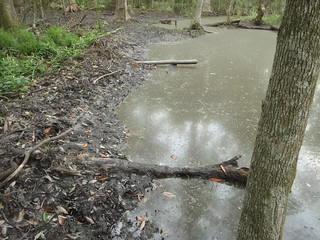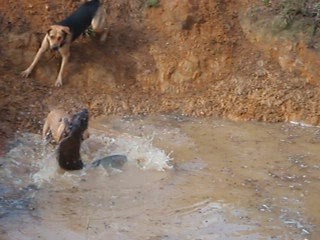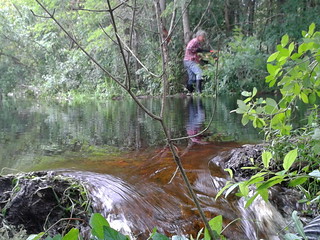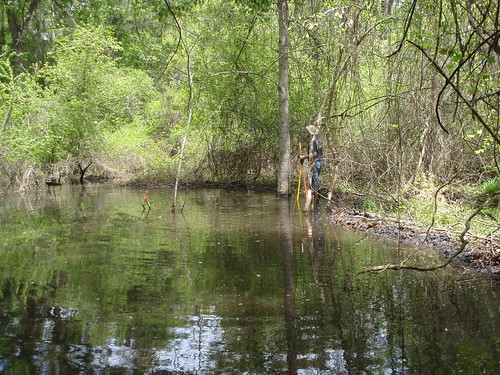 We like our beaver pond, but the beavers are a bit too ambitious.
Here’s how they operate.
We like our beaver pond, but the beavers are a bit too ambitious.
Here’s how they operate.
Haemig PD (2012) Ecology of the Beaver. ECOLOGY.INFO 13,
The forest beside the stream also changes after beaver occupation. When beavers cut down trees for food and for building their dams and lodges, they select the species of trees that they prefer, and leave other tree species standing. Consequently, after many years, the forest beside a beaver pond is usually dominated by different tree species than it was before beaver occupation, and in the gaps where the beavers removed trees, bushes and saplings now grow and with them the animal species that live in the early stages of forest regeneration (Barnes and Dibble 1986; Johnston and Naiman 1990;
Pastor and Naiman 1992; Donkor et al. 2000). In addition, when the beaver pond is formed by the dam, water floods and covers the roots of trees that formerly stood along the stream bank. These flooded trees die because the standing water prevents their roots from getting air….
In Wyoming, a survey showed that owners of private lands believed that they benefited from beaver engineering because it elevated water tables, increased the area of riparian vegetation on their lands, and also increased livestock watering opportunities (McKinstry and Anderson 1999). However, these same landowners
regarded beaver as pests when these rodents girdled timber, blocked irrigation ditches and culverts with wood, and flooded roads, railroads, crops and timber (McKinstry and Anderson 1999)….
In some places, such as the southeastern United States, beaver cause extensive damage to valuable timberland by flooding bottomland forests and eating tree seedlings (Bhat et al. 1993; Conner at al. 2000).
And girdling pine trees and other trees.
 The beavers didn’t build our pond (my father and grandfather did that
in the 1930s).
But they do keep it there now. Since they and the otters destroyed
the original dam, only
the beaver dam keeps the water in the pond.
The beavers didn’t build our pond (my father and grandfather did that
in the 1930s).
But they do keep it there now. Since they and the otters destroyed
the original dam, only
the beaver dam keeps the water in the pond.
 That’s good, but beavers are never satisfied.
They like to keep raising the water level, expanding the pond,
girdling more trees.
And building more ponds upstream.
That’s good, but beavers are never satisfied.
They like to keep raising the water level, expanding the pond,
girdling more trees.
And building more ponds upstream.
Many large predators occasionally prey on beaver, however only the wolf (Canis lupus) does so regularly and to the extent that it can significantly reduce numbers of beaver (Shelton and Peterson 1983).
 Cars sometimes run over beaver in the road; at least one of those nearby this year.
We have the occasional coyote pack and some large cats,
and of course
raccoons,
but none of them seem to bother the beavers.
Cars sometimes run over beaver in the road; at least one of those nearby this year.
We have the occasional coyote pack and some large cats,
and of course
raccoons,
but none of them seem to bother the beavers.
Only our two dogs have ever done one in that we know of. Beaver is tasty, by the way, dark, rich, and very filling, like bear.
We don’t want to get rid of the beavers, anyway:
that would destroy the pond.
 We just want to limit their water level.
We just want to limit their water level.
In the Appalachian Plateau region of New York, active beaver impoundments contained “significantly more bird species and a greater average number of bird species than abandoned beaver ponds and control sites with no record of beaver occupation (Grover and Baldassarre 1995).”
In the Upper Piedmont of South Carolina, the abundance, richness and diversity of reptiles were significantly higher at beaver impoundments than at unimpounded streams, however the “richness, diversity and evenness of amphibians was significantly higher at unimpounded streams than at beaver ponds (Metts et al. 2001).
In the Adirondack region of New York, Wright et al. (2002) found that beaver engineering increased species richness of plants at the
landscape scale, because beaver created patches of habitat (beaver ponds and meadows) had a combination of conditions that were not present elsewhere in the landscape, and some plant species that lived in these beaver-modified habitats were not present in habitats unmodified by beaver.
We get all of that here, plus in addition to the beaver pond(s), there is still a stream above, and a cypress swamp, and seepage slope, and hardwoods, and pine woods, and open grass for bob white quail, and….
-jsq
Short Link:
